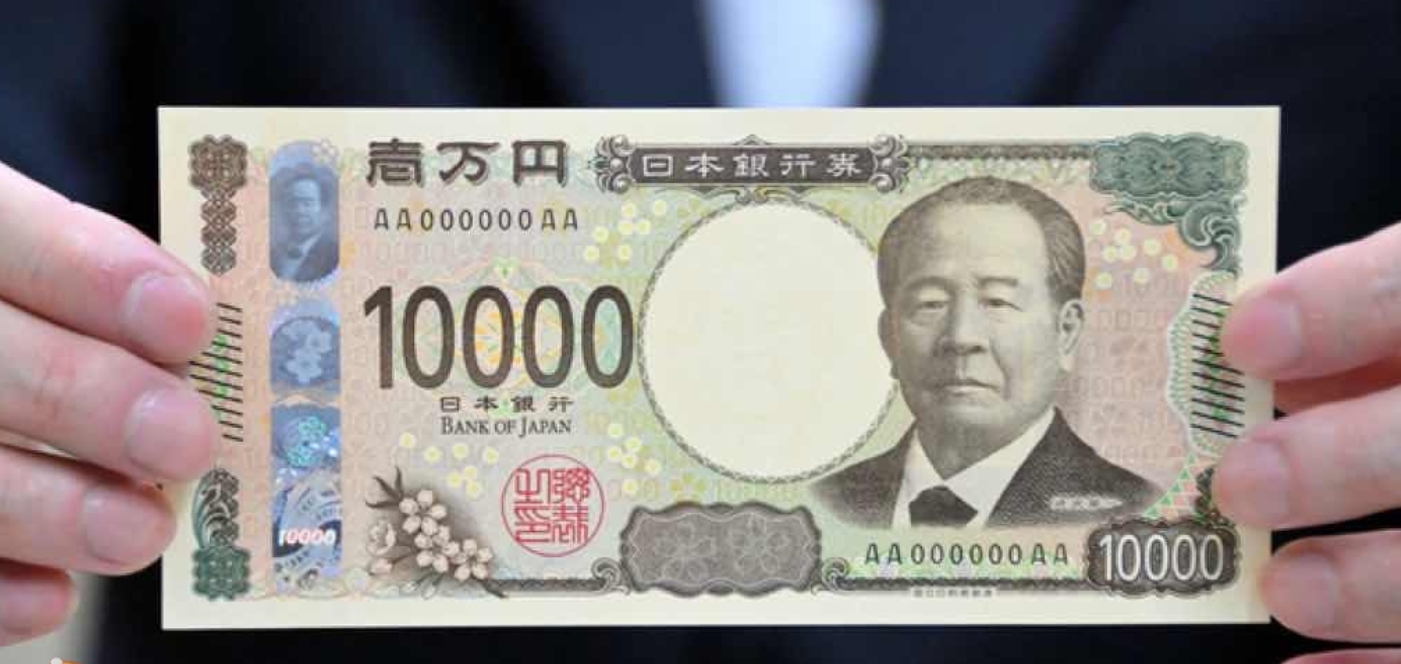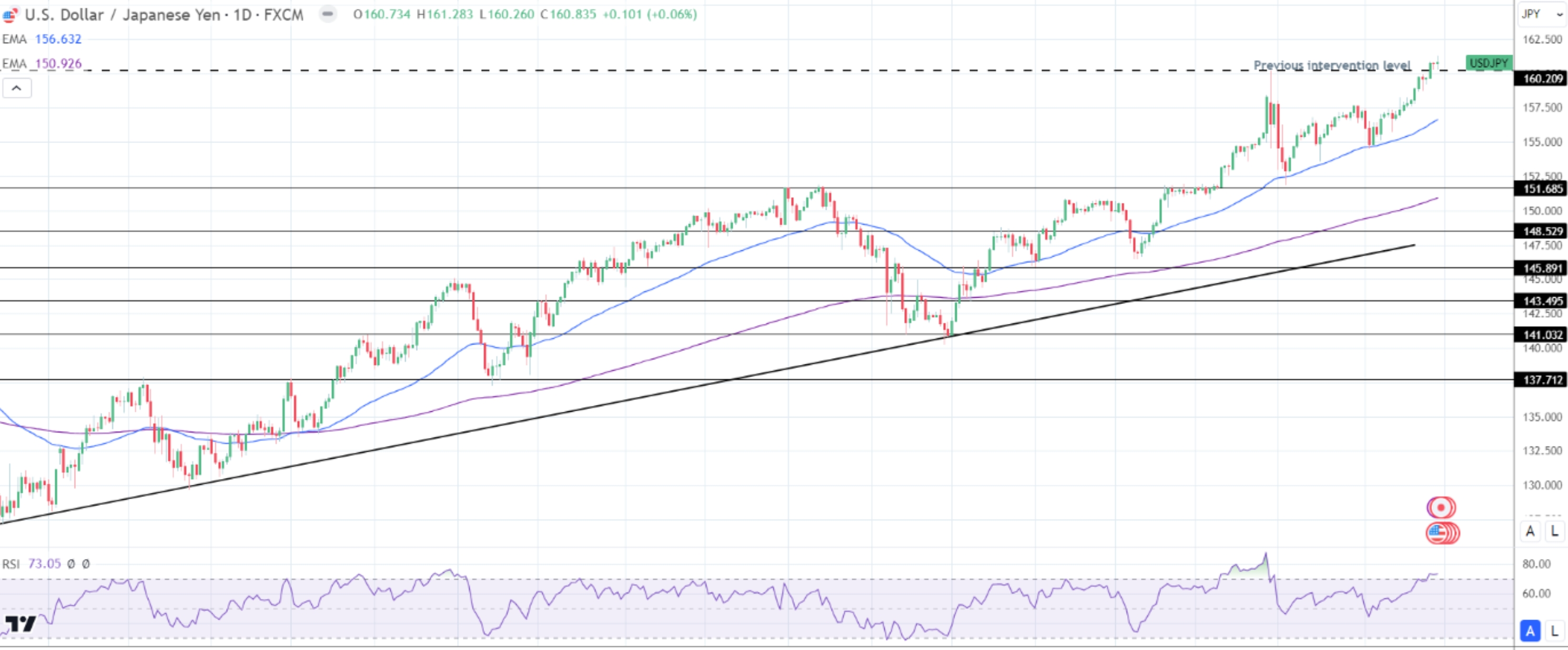The US dollar is approaching its highest level against the Japanese yen in 1986! Traders still worry about official "intervention"
On Monday (July 1st) in the Asian session, the high level of the US dollar/yen was known to have broken through the 161 integer mark to 161.18, approaching the highest level since December 1986, following last weekend's close. However, due to market speculation that the Japanese authorities will soon intervene to support the domestic currency, the "black swan" event is unfolding, so the upward space seems to be limited.

Japanese Finance Minister Toshiichi Suzuki stated at a press conference last Friday (June 28) that excessive volatility in the currency market is unacceptable, and authorities will respond appropriately to such actions. Meanwhile, Japan appointed Atsushi Mimura as the new Chief Foreign Exchange Diplomat on Friday.
However, this move did not have any easing effect on the trend of the Japanese yen, as investors are uncertain about Atsushi's monetary policy stance. This, combined with the significant interest rate difference between the United States and Japan, may continue to be a positive trend for the USD/JPY pair.
So far, the Bank of Japan has not provided any clues regarding the timing of the next interest rate hike. In contrast, the Federal Reserve appeared more hawkish at its policy meeting at the end of June and predicted that it would only cut interest rates once in 2024. In addition, the increasing likelihood of Republican candidate Trump being elected president has raised concerns about imposing aggressive tariffs, which could exacerbate inflation and trigger higher interest rates.
This, in turn, pushed the US treasury bond bond yield to a high point in several weeks, and continued to support the US dollar, providing additional support for the US dollar/yen pair, and verifying the positive prospects.
At the same time, with signs of slowing inflation, the market is still pricing the possibility of the Federal Reserve cutting interest rates in September. The Personal Consumer Expenditure (PCE) price index in the United States once again confirms this expectation, confirming the deflationary trend shown by the Consumer Price Index (CPI) and Producer Price Index (PPI) in May. This may prevent dollar bulls from making aggressive bets and limit the upward potential of the USD/JPY pair.
Traders are now looking forward to the release of important US macro data at the beginning of the new month, starting from the ISM Manufacturing PMI on Monday evening, to seek new momentum.
According to data released on Monday, Japan's short-term outlook on the prosperity of large non manufacturing industries decreased from 34 to 33 in the second quarter, and the short-term outlook on capital expenditure in large manufacturing industries increased from 4.0% to 11.1%, which was bearish for the Japanese yen.
Investors should consider revising the initial PMI for Japan's banking services sector. According to the initial value, the PMI for the services sector declined from 53.8 to 49.8 in June. If the contraction is greater, it may challenge the expectation of the Bank of Japan raising interest rates in July.
This Friday, household spending data will come to an end to a crucial week for the Japanese yen and the Bank of Japan. Economists predict that household spending will increase by 0.5% in May, while it will decline by 1.2% in April. Better than expected data may affect the Bank of Japan's monetary policy decision in July.
In addition to data, investors should also pay attention to intervention threats and comments from the Bank of Japan, as concerns about the impact of a weak yen on the Japanese economy may affect the government and the Bank of Japan. Intervention or support from the Bank of Japan for a July interest rate hike and significant cuts in Japanese government bonds may push the US dollar/yen to 150.
Later on Monday, the US ISM manufacturing PMI data will attract investors' attention. Although this data accounts for less than 30% of the US economy, it may affect investors' expectations for a soft landing in the US economy. Economists predict that the ISM manufacturing PMI will rise from 48.7 to 49.0 in June. Although the market may be interested in the Federal Reserve's interest rate path, PMI is unlikely to affect market sentiment. The service industry remains the focus of the US economy and inflation trends.
However, job vacancies and resignations at JOLTS may affect investors' expectations for a rate cut in September. Economists predict that the number of job vacancies in May will decrease from 8.059 million in April to 7.85 million. In addition, economists predict that the number of resignations will decrease from 3.507 million to 3.5 million.
The significant decrease in job vacancies and resignations may indicate a weak labor market in the United States, which could affect wage growth and reduce disposable income. The downward trend of disposable income may suppress consumer spending and demand driven inflation.
On Wednesday, the US labor market will once again become the focus of attention, along with the crucial service industry.
Economists predict that ADP employment is expected to increase by an additional 170000 in June after an increase of 152000 in May. In addition, economists predict that as of the week ending June 29th, the number of first-time applicants for unemployment benefits will increase from 233000 to 235000. The slowdown in ADP data growth and a significant increase in the number of initial jobless claims may trigger speculation about a rate cut in September.
In the short term, the short-term trend of the US dollar/yen will depend on Japan's consumer confidence, service industry data, and household expenditure data. Although weak data may affect demand for the yen, intervention threats and stronger bets on the Bank of Japan may offset the impact of the data. In addition, data on the US, service sector PMI, and labor market will be crucial for data release.
Technical Analysis of USD/JPY
FXEmpire analyst Bob Mason stated that the USD/JPY hovering above the 50 day and 200 day EMA confirms a bullish price signal.
If the US dollar/yen breaks through the June 28th high of 161.283, it indicates that it will move towards the 162 target.
On the contrary, the US dollar/yen falling below the 160 mark may indicate a decline towards the 50 day moving average. Breaking below the 50 day moving average may cause bears to hit the support level of 151.685.
The 14 day RSI is 73.05, indicating that the USD/JPY is in the overbought zone. On June 28th, at a high of 161.283, selling pressure may intensify.

Tips:This page came from Internet, which is not standing for FXCUE opinions of this website.
Statement:Contact us if the content violates the law or your rights
